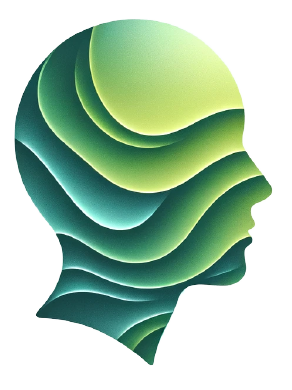Managing Migraines at Work: Strategies and Considerations


Migraines are debilitating neurological conditions that can significantly impact an individual’s ability to function, both at home and in the workplace. Managing migraine symptoms while trying to maintain a career can be challenging. In this article, we will explore your rights and responsibilities in the workplace, plus practical strategies for managing migraines at work and throughout your career.
Key takeaways
- Managing migraine disclosure at work
- How to decrease migraine’s impact on productivity
- Your Migraine-at-Work Emergency Kit
Dos and Don’ts of managing a headache disorder at work

You don’t just have severe headaches. You have migraine — a neurological condition that can disrupt your work performance and productivity for hours or even days. Migraines can also cause inconsistent job attendance, unscheduled absences, and the need to leave the office or be driven home. Because of this, it’s in your best interests to communicate your condition to both co-workers and supervisors.
Disclosing Migraine to Supervisors
While you are not required to disclose specific medical details about your migraines at work, you should give supervisors enough information to understand how your migraines affect you and how they may affect the way you accomplish your work.
- Be prepared to offer documentation of your specific diagnosis — i.e., chronic or episodic migraine, with or without aura, etc.— and how many days a month migraine may be an issue for you.
- Explain in broad terms how you cope with migraines at work, and the strategies you use to minimize the frequency and intensity of workplace attacks
- Ask for accommodations that you think will help you perform and stay productive. This might include a flexible work schedule, remote telework, or even moving from an eight-hour workday to a part-time schedule. (Advice on additional accommodations follows in this article.)
Migraine and Career: Workplace Rights

According to the Equal Employment Opportunity Commission (EEOC), having chronic migraine headaches is an impairment. Under the Americans with Disabilities Act, a migraine disability is generally defined as 15 headache days a month that have occurred for at least three months— substantially limiting the performance of work.
In addition to disability options, employees suffering migraines may be entitled to time off. It’s important to check with your supervisor about the business’ migraine sick leave.
Employers should respect the privacy and confidentiality of employees with migraines. Disclosing a migraine to an employer should not result in discrimination or stigma.
Veterans Benefits. The maximum a veteran can receive for a migraine is a 50% disability rating. This is classified as migraines that are generally debilitating. For less severe migraines, the rating would be lower, but veterans still may be entitled to additional disability compensation for migraines.
Identifying Migraine Triggers
Before you discuss your condition with your supervisor about accommodations, you need to be prepared to talk about what triggers migraines at work. The most-reported migraine triggers in the workplace include stress, dehydration, noise, fumes and lighting, including the glare of sunlight and the flickering of overhead fluorescent fixtures.
In addition to discussing migraine triggers at work, help supervisors understand that migraine attacks during non-working hours can also affect your work. Some migraines can last for several days. Even the shortest migraine can exhaust you. And despite your best efforts to avoid migraine triggers, an attack can develop out of the blue, leading to unpredictable absences.
Once you’ve identified your own most-common migraine triggers at work, do some brainstorming about accommodations that might reduce the risk of developing a migraine at work.
Below are examples of accommodations that can be made in the workplace.
| Specific migraine work triggers | Examples of possible accommodations in the workplace |
| Stress | A dark, quiet space to rest during a migraine attack at work or to use as a space for biofeedback or meditation to relieve stress to head off a full-blown migraine attack. |
| Hydration and regular meals | Increased breaks to consume food or beverages help migraine sufferers stay hydrated and avoid blood sugar fluctuations that can trigger migraines. |
| Neck, back and eye strain | Sometimes neck pain and eye strain can trigger migraines. An ergonomic setup for migraine sufferers can make a difference. Ergonomic chairs, keyboards and standing desks are all options to consider for addressing these triggers. Blue light filters or blue light glasses can also help with eye strain, glare and the flickering of monitors and computer screens. |
| Noise | Ability to wear noise-cancelling headphones or work in a quieter location. If you have a workspace you can personalize, include a thick area rug to help reduce noise and echoes that can arise, especially in open work areas. |
| Fumes/Odors | Allow a personal air purifier, discourage employees’ use of scents, and address overall indoor air quality. |
| Lighting | Explore whether dimmable lighting is an option. Or, if that’s not possible, see if you can avoid overhead lighting and instead use a desk lamp with adjustable brightness levels. |
Defusing migraine’s impact on productivity

Migraines can have a significant impact on an individual’s ability to perform job duties. According to a study published in Headache: The Journal of Head and Face Pain, migraines are associated with a 50% reduction in work productivity.1 This can result in missed deadlines, decreased quality of work, and strained relationships with co-workers.
Migraine and Career Progression. For some, the impact of migraine on their career can be significant. According to a survey conducted by the Migraine Trust, 60% of migraine sufferers reported that their condition had affected their career progression.2 This can include missed opportunities for promotion, reduced earning potential, and even job loss.
The economic impact of migraines is significant. According to the Migraine Research Foundation, migraines cost the U.S. economy more than $20 billion each year in lost productivity.3 This includes both direct costs, such as medical expenses, and indirect costs, such as lost work days and reduced productivity.
How can you address your migraine productivity challenges? It may take some trial and error to find the answers that work best for you, but many migraine sufferers find these strategies help reduce migraines and careers can keep moving forward.
- Set regular “time outs” into your daily schedule. Try deep breathing, mindfulness meditation or relaxation techniques. Investing even just a minute or two per hour can help quiet a migraine sufferer’s over-stimulated nervous system.
- Be intentional with priorities.Do what is urgent and important – but make sure to-to items really are both urgent and important. Don’t over schedule.
- Keep a headache diary at work. This helps increase awareness of any patterns that may exist with your migraines. For example, do your attacks occur at certain times of day, after a poor night of sleep, after you’ve eaten a specific food or skipped a meal, had a lot of coffee, or when you find yourself on stressful deadlines? The more you know about your migraines at work, the more power you have to take preventive action to keep them from taking a toll on your performance.
- Invest in targeted migraine prevention. Paying attention to whole-body health can increase your overall immunity, stamina and energy. That’s essential for keeping migraines’ impact on productivity to a minimum. But you can do even more by adding a laser focus on also boosting the health of your brain and central nervous system. There are specific nutrients that can support brain health —including magnesium, riboflavin (Vitamin B2) and Co-enzyme Q10—and herbs like feverfew and butterbur.
For this targeted brain-health support, doctors’ top recommendations include two non-drug options: Dolovent™ (a dietary supplement) and Petadolex® (an herbal supplement). Both of these preventatives are natural, effective and have decades-long safety records. Dolovent provides a blend of key nutrients to maintain normal brain energy metabolism and nerve signaling. Petadolex is a patented, one-of-a-kind extract that removes butterbur’s naturally occurring liver toxins (PAs) while retaining high amounts of the herb’s petasins. These active ingredients tone blood vessels to help keep them resilient to the painful spasming associated with migraine headaches. - Explore telework and flexible schedule options. Allowing employees to work from home can be beneficial for migraine sufferers. Remote work eliminates the need for commuting, reduces exposure to potential migraine triggers at work, and provides individuals with the flexibility to manage their work environment. Flexible work hours allow employees to adjust their schedules to accommodate migraine days. For example, employees may need to come in later or leave earlier on days when they are experiencing a migraine. These options also reduce stress by giving migraine sufferers more control over their work-life balance.
These strategies can go a long way to reducing migraine frequency and intensity — especially during work. But what happens when — despite your prevention efforts — you do experience a migraine at work? Keep an emergency kit handy. Here’s what to put in yours.
Migraine-at-Work Emergency Kit
It’s awful to be at work and feel a migraine coming on. Sometimes, if you have enough warning and the right “tools” on hand, you can minimize the severity of the attack—or even defuse it completely. Here’s what to stock in your Migraine-at-Work Emergency Kit.
- Instant Cold Pack and Instant Hot Pack. Sometimes, alternating hot and cold packs on the back of your neck will actually confuse pain signals to reduce intensity of an attack.
- Walnuts. This is a magnesium-rich snack. Research recognizes magnesium as a front line dietary intervention for migraine. In fact, studies have found a link between migraines and magnesium deficiencies.
- Non-sedating pain medication. Your rescue medication or an over-the-counter painkiller is must-have in your kit. Just remember that using NSAIDs too regularly can lead to a condition called Medication Overuse Headache (referred to as MOH) where stopping the medication can actually trigger chronic migraines.
- Herbal tea. Some migraine sufferers say Maharaja Chai/Samurai Chai tea blend from Teavana can help ease pre-attack symptoms as well as the intensity of the migraine itself.
- Crystalized ginger. Chewing pieces of ginger can help keep nausea from developing. The sugary crystallization can also help if you’re experiencing low blood sugar levels. You can find these in health stores or in the pharmacy aisle: there is a Dramamine brand of ginger anti-nausea chews.
- Anti-nausea and anti-diarrhea medications. Again, try to choose non-sedating options. Emetrol is one good option for nausea. Other options that are a bit more practical for migraines at work are anti-nausea lollipops and “candy” drops. One easy-to-remember brand is Queasy Pops and Queasy Drops. Pepto Bismol is a good option for diarrhea, but be sure to follow dosing instructions carefully since taking too much can cause drowsiness along with other side effects.
- An eye shade or dark glasses. This helps you cope with light sensitivity.
- Lavender oil or Vick’s VapoRub. Massaging a bit on your forehead can help soothe symptoms and eliminate any other smells associated with the migraine.
- Crackers. These are essential to help with a drop in blood sugar. Low blood sugar is a common migraine trigger.
- A water bottle. Staying hydrated is very important. Water helps with everything from stabilizing blood sugar to restoring normal cellular functions.
Conclusion
Managing migraines at work requires a combination of strategies, including identifying triggers, developing coping mechanisms, prioritizing prevention and communicating effectively with supervisors. Educating co-workers and supervisors about migraine triggers is essential for creating a migraine-friendly work environment.
By taking proactive steps to manage this difficult condition —and keeping your migraine-at-work emergency kit handy— you can minimize the impact of migraines on your career and on your overall quality of life.
Sources
- Stewart, W. F., Wood, C., Reed, M. L., Roy, J., & Lipton, R. B. (2008). Work impact of migraine Headache: The Journal of Head and Face Pain, 48(6), 87–93. https://doi.org/10.1111/j.1526-4610.2008.01077.x
- Migraine Trust. (2018). https://www.migrainetrust.org/
- Migraine Research Foundation. (2022). Migraine Facts. https://migraineresearchfoundation.org/about-migraine/migraine-facts/

Natural Remedies
2 Aug 2024
5 min read
Can weather cause migraine headaches? A forecast for fewer headache days
For centuries, individuals afflicted with migraines have reported a curious phenomenon: their headaches seem to wax and wane with changes in the weather. From the onset of a storm, to shifts in temperature, humidity or barometric pressure, the connection between migraine and weather has long captured the attention of scientists and sufferers alike. In this […]

Alternative Therapies
2 Aug 2024
7 min read
Understanding the Complex Relationship Between Migraine and Hormones
Among Americans, 17.1% of women and 5.6% of men suffer migraines.1 Both genders often experience a link between their migraines and hormone shifts. A growing body of research suggests that both male and female sex hormones could influence the course of tension-type and migraine headaches. What hormones are involved and how can these hormone migraines be managed? […]

Alternative Therapies
2 Aug 2024
9 min read
Understanding Migraines in Children: Symptoms, Impact and Treatments
Migraines are often perceived as an adult ailment, but migraines in children do occur. In fact, about 1 in 10 children experience recurrent headaches due to migraine. Symptoms of up to 18% of patients in the pediatric emergency room are found to be migraine-related.1 However, childhood and adolescent migraines look different than adult migraine — […]



